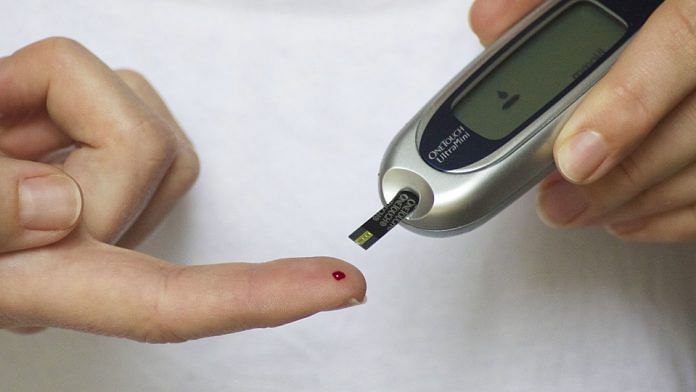Many people spend large portions of their day sitting, which can cause a range of health problems. But many may not realise that sitting too much can also worsen certain health conditions, such as type 2 diabetes. Research shows that spending too much time sitting can cause problems with blood sugar levels – making it even more important for those with type 2 diabetes to get plenty of physical activity into their day.
Type 2 diabetes causes the level of sugar (glucose) in the blood to become too high. For someone with diabetes, high sugar levels in the blood can cause serious damage to your body, including the heart, kidneys, eyes, feet and nerves. Controlling blood sugar levels is important for avoiding the risk of serious health problems.
Lifestyle changes, such as adjusting diet and physical activity, and diabetes medications, such as metformin or gliptin, are used to lower blood sugar levels. Yet following recommended diets and taking diabetes medications aren’t always effective at controlling blood sugar levels, as our research found. This shows us there’s a need to re-think diabetes care and management.
As type 2 diabetes can be different for everyone, how well a person controls their blood sugar levels can be influenced by different factors, such as age, gender, activity levels, diet and weight. This makes it important to target new, modifiable lifestyle factors – such as how much time is spent sitting.
Research we’ve done, which looked at 37 adults with type 2 diabetes, found that over two weeks, prolonged sitting was associated with high blood sugar levels. But we also found that when people stood up or walked around between periods of sitting, they had lower blood sugar levels. Other studies have also had similar results.
Our research has also shown that sitting less or breaking up periods of sitting with bouts of activity could be a simple way to manage blood sugar levels – including high sugar levels before and after breakfast, which is a common problem for people with type 2 diabetes. We found that simply walking more often could be beneficial to blood sugar control throughout the day.
In fact, walking every 15 minutes for as little as three minutes each time at a person’s usual pace could be enough to help them control their blood sugar – and could even be as effective as standard diabetes medications. Other research has shown that keeping bouts of sitting shorter than 15 minutes is better for blood sugar levels.
The reason walking – and other types of exercise – are so good for regulating blood sugar is because they make the body’s muscles work. Movement causes muscles to contract, which subsequently starts the mechanisms that allow the sugar in the blood to enter cells and fuel the body. This reduces blood sugar levels as a result.
With many people continuing to spend large portions of their days sitting while working from home, it’s important for people with type 2 diabetes to stand and walk often. Of course, that is sometimes easier said than done. But even small changes in sitting patterns throughout the day may be beneficial to a person’s blood sugar control. For example, going to the kitchen to get water or make tea can be a great opportunity to walk around for a few minutes. Even standing or walking while taking calls or during meetings can be a good idea.
It’s still important for people with type 2 diabetes to follow the advice of their doctor and stick to any special diets or take any medications they’ve been prescribed. But adding extra movement into their day will not only improve blood sugar control, it may also improve other aspects of health – including heart health and bone density.
![]()
Aye Chan Paing, PhD Candidate, Sedentary Time and Glucose Control in Type 2 Diabetes, Glasgow Caledonian University and Sebastien Chastin, Professor Health Behaviour Dynamics of People, Places and Systems, Glasgow Caledonian University
This article is republished from The Conversation under a Creative Commons license. Read the original article.
Also read: Want to learn to manage your diabetes? Free online nutrition course can help with health tips






